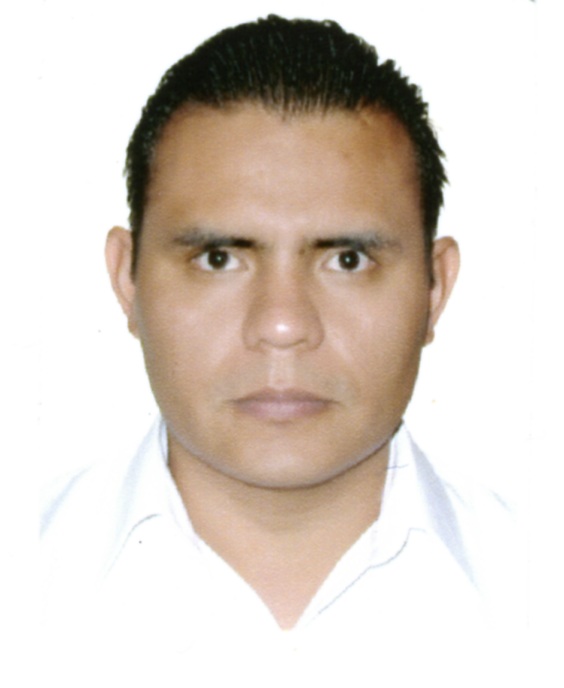Theme: Frontier Novelties in Pharmaceutical Sciences
Pharma Research 2021
| Conference Name | Venue | Dates |
|---|---|---|
| Pharmaceutical Research 2021 | Vancouver, Canada | November 12-13, 2021 |
The most anticipated Pharma event in the world and you're invited to attend 4th International Conference on Pharmaceutical Research & Innovations in Pharma Industry scheduled during November 12-13, 2021at Vancouver, Canada. which includes prompt keynote presentations, Oral talks, Poster presentations and Exhibitions! This strategic conference will provide in-depth presentations and interactive sessions, for the possibility to network with like-minded professionals and discuss how to overcome the current challenges in pharmaceutical product synthesis and product development. The focus this year will be on the latest advancements, research and development to inspect the challenges in Pharmaceutical Sciences, Clinical Research and related areas. Pharma Research 2021 is a specially designed cluster of all European Pharma conferences. The main theme of this Pharma conference is “ Emerging trends in development of vaccines for Covid 19 ” which covers a wide range of critically important sessions.
At Pharma Research 2021 meet your target audiences from around the world focused on learning about Pharma and Pharma regulations, licenses, approvals. This conference would be your single best opportunity to reach the largest assemblage of participants from the Pharma field.
2020 Highlights:
- 300+ Participation (70 Industry: 30 Academia)
- 10+ Keynote Speakers
- 50+ Plenary Speakers
- 20+ Exhibitors
- 14 Innovative Educational Sessions
- 5+ Workshops
- B2B Meetings
Motives to attend:
-
This year, we will have more senior speakers, who will be joining us from pharmaceutical giants. They're coming to share their experience with us and ensure you can maximize your knowledge.
They also want to join us because they know how important it is to have your questions answered. In light of all that's happening in the Pharmaceutical industry, this year delivers more case studies for you to gain first-hand experience on developing your drugs, clinical trials, and we will be introducing think tank sessions to discuss and debate challenges in more detail with key decision makers. These sessions will bring you constructive networking possibilities so you return to work with practical solutions for your challenges.
- Get ahead of the competition: Gather fresh intuitions from key speakers to help make restored decisions on doing business in Pharma
- Meet & Connect with Senior Stakeholders from the global Pharma network
- Content your way: Access a variety of technical and commercial tracks across the entire supply chain, or choose the one track that is most relevant to your business
- Save months of research: Don’t spend eras reading whitepapers, come and hear from the decision makers themselves on the latest trends, challenges and opportunities at the forefront of the industry
- A Unique Opportunity for Advertisers and Sponsors at this International event
- Triumph of Awards, Certificates recognizes your commitment to your profession to encourage the nascent research.
Over 50+ organizations and international pavilions will be exhibiting at the Pharma Research 2020 conference. Exhibitors will include equipment manufacturers and suppliers, systems providers, finance and investment firms, R&D companies, project developers, trade associations, and government agencies.
In addition to the products and services you will have access to valuable content, including Keynote Presentations, Product Demonstrations and Educational Sessions from today’s industry leaders.
Target Audience:
- Directors, CEO’s of Organizations
- Business Development Managers
- Chief Scientific Officers
- R&D Researchers from Pharma Industries
- Professors, Associate Professors, Assistant Professors
- PhD Scholars
- Patent Attorneys
- Investment Analysts
- Association, Association presidents and professionals
- Noble laureates in Health Care and Medicine
- Bio instruments Professionals
- Bio-informatics Professionals
- Software development companies
- Research Institutes and members
- Supply Chain companies
- Manufacturing Companies
- CRO and DATA management Companies
- Training Institutes
- Business Entrepreneurs
Young Scientist Benefits
- Our conferences provide best Platform for your research through oral presentations.
- Share the ideas with both eminent researchers and mentors.
- Young Scientist Award reorganization certificate and memento to the winners
- Young Scientists will get appropriate and timely information by this Forum.
- Platform for collaboration among young researchers for better development
- Award should motivate participants to strive to realize their full potential which could in turn be beneficial to the field as whole.
Deadline for Registrations:
- Platform for collaboration among young researchers for better development
- Till December 30, 2020 – $399
- Till January 30, 2021 – $499
- Till February 28, 2021 – $599
Track: 1 : Pharmaceutical Research and Development:
For developing a new medicine it will take nearly 10-15 years and on average and costs an average of $2.6 billion. In discovery procedure comprises the initial stages of research, which are intended to recognize an investigational drug and perform primary tests in the lab. This first stage of the process takes three to six years. By the end, investigators hope to identify a capable drug aspirant to further study in the lab and in animal models, and then in people. These developments offer great ability, but also add complexity to the R&D process. In order to ensure the safety and efficacy of personalized therapies that are used along with diagnostics, clinical trial protocols must be improved and increased.
Sub Tracks:
-
Analytical strategies for pharmaceutical products
-
Recent trends in Drug Discovery and Development
-
Pharmacoeconomics and pharma market research
-
Drug Prices and Consumer Value in R&D
-
Stability of drugs
Track: 2: Pharmaceutical Industry:
The pharmaceutical industry discovers, develops, produces, and markets drugs or pharmaceutical drugs for use as medications to be administered (or self-administered) to patients, with the aim to cure them, vaccinate them, or alleviate the symptoms. Pharmaceutical companies may deal in generic or brand medications and medical devices. They are subject to a variety of laws and regulations that govern the patenting, testing, safety, efficacy and marketing of drugs.
Sub Tracks:
-
Serialization in pharmaceutical industry
-
Track and trace in pharma
-
GDP Good Distribution Practice
-
GMP a legal requirement
Track 3: Active Pharmaceutical Ingredients:
The API market in the US is as expected growing at a CAGR of 7% over the period 2014-2019. The market research and analysis estimates that in terms of geographic regions, the Americas will be the major revenue contributor to the active pharmaceutical ingredients market throughout the next four years. The increasing demand for generic drugs from countries such as the US, the growth in aging population, and the presence of an organized R&D structure for drug development are some of the major factors that will drive the growth of the market in this region. The key vendors in this sector are Abbott Laboratories, Aurobindo Pharma, Mylan and Teva Pharmaceutical Industries.
Sub Tracks:
-
Track 3-1 API outsourcings
-
Track 3-2 US API market
-
Track 3-3 European API market
-
Track 3-4 Asian API market
-
Track 3-5 Antibody Drug Conjugate (ADCs)
-
Track 3-6 Highly Potent Active Pharmaceutical Ingredients (HPAPIs)
Track 3-7 Biological API market
Track: 4 : Formulations and NNDS:
The drug delivery technology market is expected to reach USD 1,504.7 Billion by 2020 from USD 1,048.1 Billion in 2016, growing at a CAGR of 7.5% from 2015 to 2020. The global market for Novel Drug Delivery Systems (NDDS) is expected to hit USD 320 billion by the year 2021. With the rising number of patients suffering from different types of cancer, favorable reimbursement scenario in US, improved and advanced healthcare infrastructure have driven North America to become the leading regional segment in the global NDDS in cancer therapy market. Among the NDDS technologies Embolization of Particles, Selective Internal Radiation Therapy (SIRT), Holmium-based Microspheres, Liquid Embolics and Nanoparticles are gaining importance from market point of view.
-
Pre-Formulation & Formulation Aspects
-
Nanoparticulate Drug Delivery Systems
-
Smart Drug Delivery Systems
-
Medical Devices for Drug Delivery
-
2D & 3D Printing in Drug Delivery
-
Global Drug Delivery Policy
Track: 5 : Drug discovery and NCEs:
In 2018 FDA has approved 34 new drugs which are presently in the market. Each year, CDER approves series of new drugs and biological products. Some of these products are often innovative new products that never before have been used in clinical practice. FDA’s classification of a drug as an “NME” for review purposes is distinct from FDA’s determination of whether a drug product is a “new chemical entity” or “NCE” within the meaning of the Federal Food, Drug, and Cosmetic Act. According to Medscape the ratio of researched drugs to eventually approved therapies at between 5,000-to-1 and 10,000-to-1. Nonetheless, if a drug manages to gain FDA approval, the cumulative direct and indirect expenses are huge. As per estimated study performed by a well-known university, the true cost to bring a drug to market was US$2.56 billion. This figure is inclusive of just shy of $1.4 billion in average out-of-pocket costs to the drug developer, as well as $1.16 billion in time costs, which are essentially the expected returns that investors forgo while a drug is in development.
• Track 1-1 Computer Aided Drug Design (CADD)
• Track 1-2 Insilco Drug Discovery
• Track 1-3 Novel Detection Technologies and Drug Discovery
• Track 1-4 New Chemical Entity Exclusivity Determinations
• Track 1-5 Statutory and regulatory framework
• Track 1-6 NME versus NCE
6. Good Manufacturing Practices (GMP):
Good Manufacturing Practice is the part of quality management which ensures that products are consistently produced and controlled according to the quality standards appropriate to their intended use and as required by the marketing authorization, clinical trial authorization or product specification. Good Manufacturing practices conference aims at both production and Quality Control. Current Good Manufacturing Practices (cGMP) is aimed primarily at managing and minimizing the risks inherent in pharmaceutical manufacture to ensure the quality, safety and efficacy of products. FDA regulates the quality of pharmaceuticals very carefully. Current Trends in the FDA is the main regulatory standard for ensuring pharmaceutical quality.
Sub Tracks:
• Facts about current good manufacturing practices (cGMPs)
• Good automated manufacturing practice (GAMP)
• FDA good manufacturing practices
• GMP/GCP interface & GMP audits
• GMPs for OTC and cosmetic products – global requirements
• GMPs for medical devices
• GMP requirements & standards
Regulatory affairs is a comparatively new profession which developed from the desire of governments to protect public health by controlling the safety and efficacy of products in areas including pharmaceuticals , veterinary medicines, medical devices, pesticides, agrochemicals, cosmetics and complementary medicines. Regulatory Affairs is involved in the development of new medicinal products from early on, by integrating regulatory principles and by preparing and submitting the relevant regulatory dossiers to health authorities. Regulatory Affairs is actively involved in every stage of development of a new medicine and in the post-marketing activities with authorized medicinal products. The Regulatory Affairs department is an important part of the organizational structure of pharmaceutical industry. Internally it liaises at the interphase of drug development, manufacturing, marketing and clinical research. Externally it is the key interface between the company and the regulatory authorities.
Sub Tracks:
• Importance and scope in pharma industry
• Regulatory procedure manual
• Regulatory Compliance
• Good Regulatory Practices
• Conflicts and Solution Trends in Regulatory issues
• Drug Design and development for compliancing with Regulatory Policies
• Code of Federal Regulations
8. Pharmaceutical Manufacturing, Scale Up and Tech transfer:
The biopharmaceutical sector in US enjoys 17% of all domestic R&D funded by the country and in return gave $2.5 trillion cumulative addition in economic output in 2016. Companies engaged in the brand name pharmaceutical manufacturing have grappled in recent years owing to the largest waves of drug patent expirations in history. As a consequence enabling low-price generic drugs to inundate the market. Many brand name pharmaceutical manufacturers have contended with intensifying competition from generic manufacturers, cutting into revenue growth. Until the next the five years till 2022, investments in research and development that generate a high return will occur as many pharmaceutical manufacturers strengthen their drug pipeline with orphan drugs.
Recently, process engineers have shown inclination to single-use, modular and continuous manufacturing technologies to improve efficiency and minimize scale-up and technology transfer challenges in the pharmaceutical industry. Lot of these innovations are driven by updates instigated by the FDA. The changes are inevitable; especially in the already aging biopharmaceutical sector of the industry, where original processes are often overly complex, and are characterized by inefficiency, and occasionally, inherent unpredictability.
Sub Tracks:
• Challenges in pharma manufacturing
• ICH Q10
• Knowledge transition between development and manufacturing sites
• Tech transfer protocols and guidelines
• Tech transfer key considerations
• Challenges in tech transfer
Track 9: Quality by design(QbD) approach:
“The Quality cannot be tested into the product, but it should be built into it.” QbD can be attributed as a Scientific, risk-based, holistic and proactive approach to the development of a pharmaceutical product. It is more of a deliberate design effort from product conception through commercialization requiring full understanding of how product attributes and process would relate to product performance. In FDA’s Office of New Drug Quality Assessment (ONDQA), a new risk-based pharmaceutical quality assessment system (PQAS) was established based on the application of product and process understanding. The difference between QbD for NDA and ANDA products is most apparent at the first step of the process. For an NDA, the target product profile is under development while for the ANDA product the target product profile is well established by the labeling and clinical studies conducted to support the approval of the reference product.
Sub Tracks:
• ICH Q8 and Q8(R)
• ONDQA QbD Pilot Program
• Challenges of Implementing QbD
• QRM :Quantitative Risk Management
• Uni/multi variant experiments
• Measurement capability
• CPPs :Critical Process Parameters
• CQAs : Critical Quality Attributes
• Process Performance & Product Quality Monitoring System
Track 10: QC & QA: Quality control and Quality assurance:
With greater attention to the following elements this session will discuss the all the key lookouts essential for the development of a QA/QC system in pharmaceutical manufacturing process and requires implementation in tracking inventory compilation:
An inventory agency responsible for coordinating QA/QC activities;
A QA/QC plan;
General QC procedures
Source category-specific QC procedures
QA review procedures;
Reporting, documentation, and archiving procedures.
Market research analysts predict that the global automated industrial quality control (QC) market will grow steadily at a CAGR of around 8% by 2021.
Sub Tracks:
• ICH:International Council for Harmonisation of Technical Requirements for Registration of Pharmaceuticals for Human Use
• Hazard analysis and critical control point (HACCP) methodology for pharmaceuticals"
• WHO compendium of guidelines for pharma QA
• Quality management system (QMS) in cGMP
• Data Integrity in Pharmaceutical Quality Control Laboratories
• GLP compliancing
• cGMP compliancing
Track 11: Pharmaceutical Packaging and Logistics:
Packaging is one of the largest industry sectors in the world, worth several billions. There are three major types of pharmaceutical packaging, which are: solid packaging, semi-solids packaging and liquid packaging. The pharmaceutical packaging is a very profitable industry and it is estimated that for 2022 it will reach USD. 8.24 billion. Pharmaceutical packaging represents a meagre percentage of this colossal market. The Global Logistics Market is expected to grow at a CAGR of 7.0% from 2016-2021 and CAGR of 5.6% from 2021-2027. By 2020, pharma cold-chain logistics will be worth $16.7 billion, and non-cold chain at $77.1 billion. The market was estimated at $14.84bn in 2016 and is expected to grow to $28.75bn in 2027.
Sub Tracks:
• Cold Chain Spring
• Clinical Trial Supply
• Pharma Traceability
• Product Packaging & Labeling
• Package Engineering
• Warehousing & Distribution
• Supply Chain Strategy
• Worldwide Labeling Protocols
Track 12: Analytical strategies for pharmaceutical products:
Chromatography and MS are extensively used in the formulation development stage of generic drug products. The ICH Q3B guidelines address the reporting threshold, identification threshold, and qualification threshold for impurities in the drug product. Chromatography (LC) and Gas Chromatography (GC) are extensively used to analyze stable compounds. However, for labile compounds require derivatization prior to LC or GC analysis. For certain selected analyses, Liquid Chromatography- Ultraviolet Detection (LC-UVD) and Gas Chromatography-Flame Ionization Detection (GC-FID) techniques may be deemed suitable. However, Liquid Chromatography-Mass Spectrometry (LC-MS) and Gas Chromatography-Mass Spectrometry (GC-MS) are usually the techniques of choice when higher specificity and sensitivity are required. Gas Chromatography-Electron Capture Detection (GC-ECD) techniques are commonly used for halogenated PGIs/GIs to enhance sensitivity and selectivity. Occasionally, some spectroscopic techniques like Nuclear Magnetic Resonance (NMR), light scattering, and Inductively Coupled Plasma-Mass Spectrometry (ICP-MS) are used in analyzing PGIs/GIs.
Sub Tracks:
• Analytical Strategies in the development of Generics
• Analytical strategies for Biosimilars
• Analytical strategies for Genotoxic impurities
• Analytical method transfer of pharmaceuticals
• Integrated analytical strategies for drug discovery
Track 13: Clinical trials and Pharmacovigilance:
The global clinical trials market size was valued at USD 40.0 billion in 2016 and is expected to grow at a CAGR of 5.7% until 2025. The demand for biosimilars testing is expected to increase in the U.S. The interventional study design is the most prominent method of conducting clinical trials across with globe. According to statistics provided by the U.S. FDA, over 126,000 trials are currently being conducted by means of this method. Based on indication, the oncology segment is anticipated to witness the fastest growth. According to various sources, more than USD 38.0 billion is currently spent by the healthcare industry towards preclinical and clinical development of oncology therapy products. Hence, it is anticipated to grow at a lucrative CAGR and contribute over USD 15.0 billion towards the clinical trials market by 2025. MENA’s clinical trial revenues is expected to increase almost 10-fold over the next decade, which will build an annual market of about $1 billion.
Sub Tracks:
• Clinical Study Designs
• Clinical Trials on different Diseases
• CRO/Sponsorship Clinical Trials
• Outsourcing in Clinical Trials
• Clinical and Medical Case Reports
Track 14: Pharmacoeconomics:
Health economics is a tool to help us prioritise different and sometimes competing health care interventions for these fixed resources and, in doing so, health care is treated as a commodity like any other. Knowledge of health economics coupled with political insight is essential to understand resource allocation and expenditure in a modern health care system. Pharmacists, with their unique knowledge of medicine, are crucial in using pharmacoeconomic analysis to influence expenditure and distribution of resources on medicines. Design and management of pharmacoeconomic studies
• cost and burden of illness studies,
• drug utilization,
• budget impact analysis,
• modeling and simulations
are very important in today’s pharmaceutical market. Moreover pharmacoeconomic approach towards
• Management of Consensus Meetings (Advisory Boards, Delphi Panels, etc.)
• Re-analysis of trials
• Implementation and customization with local data of pharmacoeconomic models
have greatly aided the pharma industries.
Sub Tracks:
• ROI: Return on Investment
• Economic Evaluation Of Pharmaceuticals
• Quality-Adjusted Life Years
• Health Economics
• Cost-Minimization Analysis
• Cost-Benefit Analysis
• Cost-Effectiveness Analysis
• Cost-Utility Analysis
• Pricing and Market Access
Track: 15: Drug Delivery Technologies & Drug Designing and Development:
Particle Sciences has a great deal of successful experience in the development of successful delivery systems for many types of APIs and sites of action. Drug delivery technologies enhance drug absorption, efficacy, and patient experience. Enhancing the drug delivery technology of final pharmaceutical formulation can increase its commercial success. Drug delivery systems have been used in delaying drug clearance processes. Drug delivery approaches have their advantages and limitations. Drug delivery approaches include solubilization, permeability enhancement, modified release (MR). Researchers discover new drugs through insights into a disease process that allow researchers to design a product to stop or reverse the effects of the disease. Once researchers identify a promising compound for development, they conduct experiments to gather information on how it is absorbed, distributed, metabolized, and excreted, best dosage, Side effects, how it interacts with other drugs and treatments and its effectiveness as compared with similar drugs.
The global drug delivery technology market is projected to reach USD 1,669.40 Billion by 2021 from USD 1,179.20 Billion in 2016, at a CAGR of 7.2% during the forecast period. The North American drug delivery technologies market is projected to reach USD 758.7 Billion by 2021 from USD 520.0 Billion in 2016, at a CAGR of 6.5% during the forecast period. Bringing one new drug to the public typically costs a pharmaceutical or biotechnology company on average more than $1 billion and takes an average of 10 to 15 years. Each drug undergoes a stringent process of discovery, development, approval and finally, public use.
Sub Tracks:
• Vaccine Based Drug Delivery Technology
• Micro & Nano Technology
• Medical Devices for Drug Delivery
• Nano Particulate Drug Delivery Systems
• Drug Release Testing
• Advances in Drug Delivery
• Smart Drug Delivery Systems
• Drug designing and Molecular Modelling
• Drug Design Software
• Medicinal Chemistry in Drug Discovery
Track: 16: Pharmaceutical Nanotechnology: Challenges and Opportunities:
Pharmaceutical nanotechnology is most innovative field in the pharmaceutical industry. Nano technology is dealing with new emerging technologies. Application of nanotechnology in imaging, diagnostics and therapeutics is considered as an important factor. The drug delivery system positively impacts the rate of absorption, distribution, metabolism, and excretion of the drug or other related chemical substances in the body. Within regulatory boundaries thermodynamics and nanotechnology are considered to be evolving tools to provide new and integrated knowledge for the production of new medicines.
Nanotechnology speaks to a stage for creating progressive changes and enhancements to a wide range of parts of pharmaceutical assembling. Pharmaceutical nanotechnology has provided fine-tuned diagnosis and focused treatment of disease at a molecular level. Nano technology is having an utmost importance in Gene therapy.
Sub Tracks;
• Nanotechnology in Drug Delivery
• Advancement In Nanotechnology
• Cellular and Sub cellular Nanotechnology
• Challenges to Pharmaceutical Nanotechnology
• Pharmaceutical Nanotechnology based Systems
Track: 17: Use of Nanoparticles in DDS and Newer Methodologies:
A particle with at least one dimension less than 100nm is a nanoparticle. They are composed of synthetic or semisynthetic polymers carrying drugs or proteinaceous substances. Nanoparticles have developed as capable vehicles to deliver drugs in the body. Nanoparticles comprising encapsulated, dispersed, absorbed or conjugated drugs have exceptional characteristics that can lead to higher performance in a variety of dosage forms. Nanoparticles are one of the novel drug delivery systems which can be of potential use in controlling and targeting drug delivery as well as in cosmetic textiles and paints. There are recent developments in the use of nanoparticles as drug delivery systems to treat a wide variety of diseases.
Sub Tracks:
• Nanocarriers and their applications
• Nanocarriers in cancer therapy
• Uses and advantages of nanoparticles in medicine
• Nanoparticles for drug delivery
Track: 18: Pharmaceutical Auditing for OTC Drugs:
Non-prescription medicines, commonly known as over the counter or OTC medicines, are used for treatment. Sales of over the counter medicines in pharmacy and grocery outlets reached £1268 5 million in 1994 about a third of the NHS drugs bill of C3 6 billion. In the late 1980s the government fuelled the over the counter market by making it easier to reclassify certain medicines from prescription only status to allow over the counter sale in pharmacies. Although all non-prescription medicines are required to hold a product licence, few have been evaluated in formal clinical trials in the setting in which they will be used. As a result many non-prescription products sold by pharmacists have been criticised for their lack of effectiveness. There are three legal categories of medicines prescription only medicine (POM), pharmacy medicine (P), and general sales list medicine (GSL); the last can be sold from outlets including supermarkets and drugstores. The principle of a class of medicines whose sale requires the supervision of a pharmacist is not unique to the United Kingdom.
Sub Tracks:
• Analysis and information on possible risk of incorrect or delayed diagnosis arising from non-prescription use
• Product traceability
• Laboratory operations
• Equipment validation
• Review the do’s and don’ts during the auditBuilding and facility maintenance
• Standardized grading scheme
• Audit tools based on 21 CFR 210 & 211, ICH Q10
• Audits, including capacity, quality assurance and post-market quality system verification
Track: 19: Importance of Audit in Pharmaceutical Industry:
International Organization for Standardization (ISO) 9000 requirements do not have the same status of “the law” in the U.S. as do requirements listed in the Code of Federal Regulations (CFR). Because 21 CFR 210 and 211 have legal status, the U.S. Justice Department has extensive powers to ensure compliance. For example, product in the marketplace can be seized, fines can be levied, and personal liability can be assigned. So, management must understand that auditing must be taken seriously, and the requirements listed are just that – requirements. While audits are the common place in the pharmaceutical industry, the preparedness for those events varies. The companies that develop a risk-based approach to audits are able to remain competitive while meeting quality and government compliance standards on a regular basis. Conversely, the companies that have not implemented strong processes are putting themselves at risk for non-compliance. According to the Federal Food, Drug and Cosmetic Act, “Registered domestic drug establishments shall be inspected by the FDA at least once every two years.” Under some conditions the inspections may be even more frequent, As regulations become more stringent, regulatory authorities are likely to step up audits which is even more reason for companies to be prepared.
Sub Tracks:
• The Audit as a Quality Control Mechanism
• Adequate supervisory control
• Quality control plans
• Proper administration of a benefit plan
Track: 20: Biologics and Biosimilars :
A biopharmaceutical, otherwise called a biologic therapeutic item or biologic, is any restorative item made in, extricated from, or semi orchestrated from organic sources. Not quite the same as synthetically incorporated pharmaceuticals, they incorporate immunizations, blood, or blood segments, allergenic, substantial cells, quality treatments, tissues, recombinant restorative protein, and living cells utilized as a part of cell treatment. Biologics can be made out of sugars, proteins, or nucleic acids or complex mixes of these substances, or might live cells or tissues. They are confined from normal sources—human, creature, or microorganism. Phrasing encompassing biopharmaceuticals fluctuates amongst gatherings and elements, with various terms alluding to various subsets of therapeutics inside the general biopharmaceutical class. Some administrative offices utilize the terms natural restorative items or remedial organic item to allude particularly to designed macromolecular items like protein-and nucleic acid–based drugs, recognizing them from items like blood, blood segments, or antibodies, which are typically extricated specifically from a natural source Gene-based and cell biologics, for instance, frequently are at the front line of biomedical research, and might be utilized to treat an assortment of therapeutic conditions for which no different medications are accessible.
Sub Tracks:
• Legal Issues and BPCI Act
• Quality measures
• Intellectual Property Rights in Biosiimlars
• Regulatory requirements for Biosimilars
• New US-FDA draft Guidance on Interchangeability of Biosimilars
Track 21: Regulatory Authority Compliance:
With more stringent compliance parameters set by the USFDA the quality assurance of pharmaceutical products is ensured. In addition to cGMP, GLP and GCP practices as per the US Federal law pharma products should comply with 21CFR regulations. Also on a regular basis the FDA organizes compliance programs for the pharma industries in program areas like Biologics (CBER), Bioresearch Monitoring (BIMO), Devices/Radiological Health (CDRH), Drugs (CDER), Food and Cosmetics (CFSAN), Veterinary Medicine (CVM). The results of regulatory audits NAI – No Action Indication, VAI – Voluntary Actions Indicated, OAI – Official FDA Action Indicated are also critical to decide by auditors in regards to compliance matters and call for several challenges to overcome by the manufacturers.
Sub Tracks:
• Food and Drug Administration (FDA)
• Medicines and Healthcare Products Regulatory Agency (MHRA)
• Therapeutic Goods Administration (TGA)
• Central Drug Standard Control Organization (CDSCO)
• Health Canada
• European Medicines Agency (EMEA)
Track 22: Pharma Market Research:
Two powerful megatrends — dramatic deceleration in U.S. market growth and significant restructuring of the healthcare system — are at play in the U.S. pharmaceuticals industry. The U.S. pharmaceutical market is the world’s most important national market. Together with Canada and Mexico, it represents the largest continental pharma market worldwide. The United States alone holds over 45 percent of the global pharmaceutical market. In 2016, this share was valued around 446 billion U.S. dollars. The biopharmaceutical companies in the United States exported goods in the amount of some 31 billion U.S. dollars during 2016. In the United States, there are an estimated 100,000 OTC drug products marketed and sold in a variety of outlets, such as pharmacies and convenience stores. TH revenue for the OTC drugs also add to the pharma market growth. Top markets for pharmaceutical products continue to be developed countries in Western Europe, East Asia, and North America with high per capita spending on healthcare, growing elderly populations, and advanced regulatory systems. Though ranked lower, there are growing opportunities in developing countries like China as incomes and healthcare spending increases. The pharmaceutical sector has consistently been one of the most R&D intensive industries in the United States. The research-based industry generally allocates around 15 to 20 percent of revenues to R&D activities and invests over $50 billion on R&D annually.
Sub Tracks:
• Generic Drugs Market
• Over-the-Counter (OTC) Drugs and Dietary Supplements
• Onco medicine market
• Immunology and Oncolytic Virology
• Biosimilars market
• Drug Testing Market
• Neglected Tropical Disease Treatments
• Antibody Drug Conjugates
The Growing Pharmaceuticals Market: Expert Forecasts and Analysis
The global pharmaceuticals market was worth $934.8 billion in 2017 and will reach $1170 billion in 2021, growing at 5.8%, according to a recent pharma market research report by The Business Research Company.
This is an accelerated pace compared to 5.2% for the years before 2017, but is slower than the other two large healthcare segments, medical equipment and healthcare services. Healthcare as a whole is growing at over 7% year on year.
The factors that affect the pharmaceutical market size include disease prevalence, drug affordability, consumer attitudes, government policies and some supply-side factors:
- Disease prevalence is related to population size, age, genetic inheritance and behaviour (infectious disease incidence is lower where sanitation practices are better; sedentary lifestyles also encourage chronic disease).
- Affordability is related to income but also to drug prices.
- Consumer attitudes include willingness to use alternative therapies or distrust of taking drugs.
- Government (and insurance company) policies affect reimbursement and who the payer is. Other government policies determine regulation, which can be a significant barrier to the launch of new treatments.
- A major supply-side factor is availability of an appropriate treatment, which may be a matter of quantity, as in an epidemic, or of drug discovery and development.
PESTEL Analysis for the Pharmaceuticals Market
Current and ongoing changes in political, economic, social, technological, legal and environmental factors are influencing growth in the healthcare market, where drugs play an important part. The following factors are all boosting healthcare market growth:
- Reduced taxes and lowered drug prices in the USA
- GDP growth of over 6% in China and India
- Widespread population aging and sedentary lifestyles leading to increased chronic disease prevalence
- Industrialized data services in R&D enabling the use of clinical trial data in trial simulations
- Lowered regulatory barriers for new drugs in the USA
- High urban pollution levels increasing the incidence of conditions like asthma
As a result, healthcare expenditure per capita is set to rise from its 2017 level of $1137 to $1427 by 2021.
Pharmaceutical Market Restraints and Drivers
Part of the explanation for the relatively slow current growth of the pharma market is that the launch of major new products has slowed and that companies are restricting their R&D investment. For example, despite the huge potential for any effective and safe new drug for treating Alzheimer’s disease, Pfizer has ended its Alzheimer’s research program while AstraZeneca and GSK have cut back. High failure rates, the $2 billion average cost of developing a new drug, and falling returns on investment — down from 10.1% a year in 2010 to 3.2% in 2017 for the big pharma companies, according to Deloitte’s — are restraining the launch of high-priced new breakthrough drugs such as those that boosted the market in earlier years.
Most pharmaceutical industry growth now is coming instead from the increased size of the global aging population, which boosts demand for long-term treatments for chronic diseases, and better access to healthcare in emerging economies.
The Changing Geography of Pharma Markets
Growth over past decades means that North America and Western Europe still account for 56% of the global market, but Asia Pacific has overtaken Western Europe as the second largest region. Growth in Asia Pacific is fueled by increased affordability of drugs resulting from the launch of low-priced generics. Other factors that are positive for growth in Asia Pacific are the rise of GDP per capita in the region, government programs to support healthcare, and rapid urbanization, which brings both doctors and pharmacies within easy reach of increasing proportions of growing populations. Pharma sales in Asia Pacific will grow at 8.4% a year to 2021.
The story is a similar one at the level of country. The USA, by itself worth 25% of the global total, is restraining global growth by rising at below 5% a year, while the much smaller pharma markets of India and China are both achieving double that pace.
Key Segments in the Pharmaceutical Market
The largest pharma market globally is for musculoskeletal drugs. These are treatments for diseases such as rheumatoid- and osteo- arthritis, osteoporosis, carpal tunnel syndrome, tendonitis, rotator cuff tear, muscular dystrophy, myasthenia gravis, lupus erythematosus and others. Major drugs in this segment include Piroxicam Glaxo, Dolonex, Felden, and Piroxicam Pfizer. The segment accounted for 14% of the global total in 2017. Cardiovascular, oncology and ant-infective drugs are the second third and fourth largest markets.
Drugs for treating metabolic disorders such as diabetes and diseases of the thyroid and pituitary glands will be the fastest-growing segment of the global pharma market to 2021. This segment will grow at 9% a year going forward, following recent growth of 11.6%, but it will remain in fifth place for market size.
Anti-diabetic drugs are the largest subsegment of the global pharmaceutical industry, worth over $85 billion in 2017; second are the anti-virals and third come anti-hypertensives. Drugs for some of the less prevalent cancers — thyroid, skin and ovarian cancer — are the fastest-growing subsegments. This is in part because the US Federal Drug Administration has allowed a less rigorous regulatory procedure and lower endpoint benchmark for cancer drugs, so increasing the rate of innovation.
Competitive Landscape & Top Pharmaceutical Companies
Pharmaceutical drugs are subject to a large number of laws and regulations that deal with patenting, testing, safety, efficacy and marketing and affect the size and growth rates of the market. Together with the high R&D costs involved in creating new drug solutions, these can act as barriers to entry for small companies. However, pharmaceutical companies produce both generic and branded drugs. Generics, which are copies of patent-expired drugs, are opportunities for smaller entrants. They are taking an increasing share of the market, particularly in developing economies, where governments are encouraging their production in order to make lower-price treatments more widely available.
In the overall market, top pharmaceutical companies include:
- Novartis
- Sanofi
- Pfizer
- Hoffman-La Roche
- Gilead
Together the top ten pharmaceutical companies account for 30% of global sales, making the market moderately fragmented. Within individual segments, however, the share of these pharmaceutical companies varies: Hoffman-La Roche is by some way the leading pharmaceutical company in the large oncology drugs market, but Sanofi leads in the cardiovascular and metabolic disorders segments.
In markets where biologics have penetrated, the leading players are not in the top ten pharma manufacturers: Biogen, for instance, leads in the central nervous system segment, while Bristol-Myers Squibb and Eli Lilley have significant shares in oncology.
Deal activity in the healthcare industry has surged in recent years. Most mergers and acquisitions are aimed at boosting product portfolios and expanding the market reach of products and services. For example, in August 2014 Merck acquired a clinical-stage pharmaceutical company, Idenix Pharmaceuticals Inc., for nearly $4 billion. Through this acquisition Merck strengthened its product portfolio by adding Idenix’s potential hepatitis drugs.
Data Segmentations: Pharmaceutical drugs global market, global pharmaceutical drugs market by therapeutic area segments and subsegments; pharmaceutical drugs market by region and country and by therapeutic area segments; branded versus generic drugs markets by country; competitor drug sales and market shares by therapeutic area; global healthcare market historic and forecast size and growth; healthcare market regional and country size and growth; healthcare market competitive landscape.
A look ahead into 2019 Global Market Analysis :
One of the key items to look for in 2019 is how the pharmaceutical industry will fare with new product approvals. In 2018, the US Food and Drug Administration’s (FDA) Center for Drug Evaluation and Research (CDER) approved a record-high 59 new molecular entities (NMEs), surpassing the previous record of 53 NME approvals in 1996 and the 46 NMEs approved in 2017. The 59 NME approvals in 2018 was nearly double the 10-year (2009–2017) average of 33 NME approvals by FDA’s CDER. The record-number of NME approvals continues an upward trajectory for NME approvals (with the exception of 2016 when 22 NMEs were approved) over the last several years. FDA’s CDER approved 41 NMEs in 2014, 45 NMEs in 2015, 46 NMEs in 2017, and the 59 NMEs thus far in 2018.
In addition, continuing a recent trend, orphan drugs accounted for a large percentage of NME approvals. More than half (58%), or 34, of the NME approvals in 2018 were for orphan drugs, defined as drugs that treat 200,000 or fewer people in the US. In 2017, 39%, or 18 of the 46 NMEs approved by the FDA’s CDER were orphan drugs, which continued a recent trend of approximately 40% of NME approvals being orphan drugs. In 2016, 9 of the 22 NMEs approved by the FDA were orphan drugs. Of these 22 NME approvals, two were diagnostic agents, so 9, or 45%, of the new drugs approved in 2016 were orphan drugs. In 2015, 47%, or 21 of the 45 NMEs approved by the FDA’s CDER were orphan drugs, and in 2014, 41%, or 17 of the 41 NMEs approved were orphan drugs.
The key question for the pharmaceutical industry in 2019 is whether the innovation train will continue to roll.
Despite the optimism for product innovation based on NME approvals in 2018, other issues may have a dampening effect, notably financing into the biopharmaceutical industry. “Biopharma has had a rocky few months, and many expect life to get tougher as we head into 2019,” said Amy Brown, author of a recent report by Vantage, the editorial arm of Evaluate Ltd, in highlighting key predictions for the pharmaceutical industry in 2019. “The sector will need to deliver on its innovation promises next year if it wants to rise above wider economic and financial concerns.”
In the US, a total of $4.0 billion was invested into biotechnology-related industries in the third quarter of 2018 (the latest available data as of press time), which represented a 1% decrease from the second quarter of 2018 while deals remained constant quarter on quarter with 120 deals each in the third and second quarters of 2018, according to the Healthcare MoneyTree report by PwC and CB Insights. The biotechnology subsector raised $2.160 billion in the third quarter of 2018, a 7% increase from the second quarter of 2018. Out of the 59 deals, closed in the third quarter, six were mega-round deals, which contributed $1.176 billion of the dollars invested in the third quarter. The drug-development subsector raised $884 million in the third quarter of 2018, a 31% decrease from the second-quarter of 2018. Out of the 31 deals closed, none were mega-round deals. For the other subsectors in biotechnology-related industries, the medial device & equipment industry raised $750 million in 45 deals in the third quarter of 2018, a decrease of 4% from the second quarter of 2018, in terms of dollars invested, according to the PwC/CB Insights’ Healthcare MoneyTree report. The drug-discovery subsector raised $517 million in 16 deals in the third quarter of 2018, and the disease-diagnosis subsector raised $325 million in five deals.
The Vantage report also made several other noteworthy predictions relating to product developments for 2019. AbbVie’s Humira (adalimumab), an anti-inflammatory drug for treating arthritis, plaque psoriasis, ankylosing spondylitis, Crohn's disease, and ulcerative colitis, will continue to be the world’s biggest-selling drug in 2019, with sales of just under $21 billion. For new product launches in 2019, Alexion Pharmaceuticals’ Ultomiris (ravulizumab) for treating adult patients with paroxysmal nocturnal hemoglobinuria, a rare and life-threatening blood disease, which was approved by the FDA in December 2018, has potentially the largest upside for a new drug approval with a net present value of $10.9 billion. The Vantage report also predicts that AstraZeneca will net the most new sales in 2019, increasing by $2.3 billion over the previous year’s total.
Macroeconomic changes will also be an important consideration for 2019. A recent analysis by PwC for its 2019 global outlook noted a slowdown in global economic growth following a mini-boom between the end of 2016 and early 2018. In the US, the PwC report projects that the boost from fiscal stimulus is likely to fade, higher interest rates may dampen consumer spending and a strong dollar could continue to drag on net exports for growth to moderate from an estimated 2.8% in 2018 to around 2.3% in 2019. On the plus side, the US will record its longest-ever business cycle expansion in July 2019, when the period of growth that began in mid-2009 surpasses the length of the expansion that ran from 1991 until 2001, but this could come to an end in 2020 or 2021, according to the PwC analysis.
In the Eurozone, the PwC report projects that uncertainty relating to global trade tensions and Brexit will take a toll while the European Central Bank is likely to offer less support to growth as its quantitative easing policy ends. Growth in China is also expected to slow relative to 2018 due to potential impact of US tariffs and the need for the government to control debt. The report also noted that other emerging market currencies could come under periodic pressure from a strong US dollar, but this effect is likely to lessen later in 2019 due to the US economy slowing.
The PwC report also says that trade wars will continue in 2019, which will impact overall economic performance but also create uncertainty for policy makers in terms of considering the impact of potential tariffs on growth and inflation and for businesses, which will seek to mitigate the impact on their supply chains and customers. The main focus of tensions is likely to remain US-China trade although the report points out other scenarios are possible.
Pharma Research 2020
Conference Series LLC Ltd hosted the “3rd International Conference on Pharmaceutical Research and Innovations in Pharma Industry” (Pharma Research 2021) during August 28-29, 2020 at Hotel Augusta Barcelona Valles, Address: AP-7, Km 12 5, 08410,Barcelona, Spain
Pharma Research 2020 is specifically premeditated with a unifying axiom providing platform to widen the imminent scientific discoveries in the field of Pharmaceutical Research and Development and to deliver novel ideas besides incorporating better understanding of their role in Pharma, Drug Manufacturers, Business Management and Marketing. The scientific meeting has laid the path for the development and the validation of Pharmaceutical Research and Development under the theme of “Future Prospective and New Era Technologies in Pharmaceutical Research and Innovations in Pharma Industry”
Conference Series LLC Ltd is prerogative to thank the Organizing Committee, Editorial Board Members and Moderator – Dr. Hongbin Wang, California Northstate University, USA and Life Sciences, Austria, speaker participants, poster presenters and attendees for enormous support and participation in this grand venture.
The highlights of the meeting were the eponymous lectures, delivered by the following speakers:
Devendra Ridhurkar, Neurax Pharmaceuticals, Spain
Reem K Arafa, Zewail City of Science and Technology, Egypt
Rashid Mahmood, Surge Laboratories Private Limited, Pakistan
Tariq Jamshaid, Surge Laboratories Private Limited, Pakistan
Muhammad Jehangir, Novamed Group, Pakistan
Humayun Riaz, Rashid Latif College of Pharmacy, Pakistan
Nitesh Singh, Indira Gandhi National Tribal University, India
Dipak Chetia, Dibrugarh University, India
Carmen Tamayo, Heterogeneity LLC, USA
Freddie Ann Hoffman, Heterogeneity LLC, USA
Gus R Rosania, University of Michigan, USA
Hai-Feng Ji, Drexel University, USA
Maysoon A Abujarad Alhuwitat, Independent Researcher, Jordan
Imeda Rubashvili, Tbilisi State University, Georgia
Rayhana Begum, Primeasia University, Bangladesh
Maysoon A Abujarad Alhuwitat, Independent Researcher, Jordan
Michael Chorny, University of Pennsylvania, USA
Hongbin Wang, California Northstate University, USA
Aysu Yurdasiper Erdem, Ege University, Turkey
Imeda Rubashvili, Ivane Javakhishvili Tbilisi State University, Georgia
Adella Aparna, Vaagdevi College of Pharmacy, India
Video presentations:
Reveng Abdullah Abdulkareem, University of Duhok, Iraq
Deniz Sahin Tas, Gazi University, Turkey
E-poster Presentations:
Reveng Abdullah Abdulkareem, University of Duhok, Iraq
Maqsood Khan, Ziauddin University, Karachi, Pakistan
By the endless support of the Journal of Pharmaceutical Sciences & Emerging Drugs and Journal of Pharmaceutics & Drug Delivery Research. Conference Series LLC Ltd is pleased to announce our 4th International Conference on Pharmaceutical Research & Innovations in Pharma Industry during November 12-13 at Vancouver, Canada
For conference attendance and participation only Business Visa should be applied. Contact your nearest travel agent/visa information center/US Embassy for the correct application form.
All visas for visiting US shall be processed by respective authorities only upon submission of proper documents through proper channel.
In case of non-furnishing of documents, non-adherence to guidelines visas shall be cancelled by respective authorities.
The minimum supportive documents that might be required while applying for US visa include:
Letter of invitation,
Abstract acceptance letter (if speaker),
Registration payment receipt,
Accommodation confirmation letter issued under conference letter head.
For letter of invitation and accommodation confirmation, payment of registration fees and accommodation charges is a pre-requisite.
Mandate documents required from conference secretariat should be obtained only through Jessie Rose.
For more details please contact
Jessie Rose
Program Manager
PHARMA RESEARCH 2021
E: pharmaresearch@eventqueries.com
Whats app: 1-9022016333
Conference Highlights
- Pharmaceutical Research and Development:
- Pharmaceutical Industry:
- Active Pharmaceutical Ingredients:
- Formulations and NNDS:
- Drug discovery and NCEs:
- Good Manufacturing Practices (GMP):
- Regulatory Affairs:
- Pharmaceutical Manufacturing, Scale Up and Tech transfer:
- Quality by design(QbD) approach:
- QC & QA: Quality control and Quality assurance:
- Pharmaceutical Packaging and Logistics:
- Analytical strategies for pharmaceutical products:
- Clinical trials and Pharmacovigilance:
- Pharmacoeconomics:
- Drug Delivery Technologies & Drug Designing and Development:
- Pharmaceutical Nanotechnology: Challenges and Opportunities:
- Use of Nanoparticles in DDS and Newer Methodologies:
- Pharmaceutical Auditing for OTC Drugs:
- Importance of Audit in Pharmaceutical Industry:
- Biologics and Biosimilars :
- Regulatory Authority Compliance:
- Pharma Market Research:
To share your views and research, please click here to register for the Conference.
To Collaborate Scientific Professionals around the World
| Conference Date | November 12-13, 2021 | ||
| Sponsors & Exhibitors |
|
||
| Speaker Opportunity Closed | Day 1 | ||
| Poster Opportunity Closed | Click Here to View | ||
Useful Links
Special Issues
All accepted abstracts will be published in respective Our International Journals.
- Journal of Pharmaceutical Sciences & Emerging Drugs
- Journal of Pharmaceutics & Drug Delivery Research
Abstracts will be provided with Digital Object Identifier by




















































